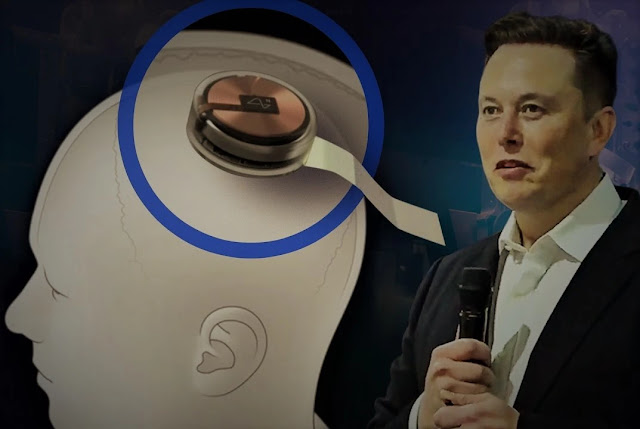Elon Musk's Neuralink Ship Between Science and Science Fiction

Introduction:
Elon Musk's Neuralink ship is one of the most innovative and fascinating projects of the 21st century. It is a brain-machine interface that aims to connect humans and computers. The technology behind Neuralink has the potential to revolutionize the medical industry, and it has already generated significant interest from the scientific community. In this article, we will discuss what Neuralink is, how it was established, its history, and its potential impact on the medical field.
What is Neuralink?
Neuralink is a brain-machine interface that aims to merge humans and computers. The technology involves implanting tiny electrodes into the brain that can read and write neural activity. This allows for a two-way communication between the brain and a computer. The goal of Neuralink is to create a seamless connection between humans and machines, allowing for enhanced cognitive abilities and the ability to control technology with the power of thought.
How and when was Neuralink established?
Neuralink was established in 2016 by Elon Musk, the CEO of SpaceX and Tesla. Musk founded Neuralink as a startup company with the goal of developing a brain-machine interface that could help humans keep up with the rapid technological advancements of the 21st century. The company began with a small team of engineers and scientists who were tasked with developing the technology behind Neuralink.
History behind the ship projects:
The idea behind Neuralink has been around for decades, with researchers and scientists exploring the possibilities of brain-machine interfaces since the 1970s. However, it wasn't until the early 2000s that significant progress was made in the field. In 2006, a team of researchers at the University of Pittsburgh developed a brain-computer interface that enabled a monkey to control a robotic arm using only its thoughts. This breakthrough sparked renewed interest in the field, and several companies and research institutions began exploring the potential of brain-machine interfaces.
The idea first evolved:
The idea behind Neuralink evolved from Musk's fascination with the human brain and his concern that humans could become obsolete in the face of rapidly advancing artificial intelligence. Musk believed that a brain-machine interface could be the solution to this problem, allowing humans to keep up with the technological advancements of the 21st century.
Previous attempts:
Several companies and research institutions have attempted to develop brain-machine interfaces in the past. However, most of these attempts have been unsuccessful due to the complexity of the human brain and the limitations of existing technology. Musk believed that his company, Neuralink, could overcome these challenges by taking a multidisciplinary approach to the problem, combining expertise in neuroscience, engineering, and computer science.
Moralities around the idea:
The idea of a brain-machine interface raises several ethical and moral questions. One of the main concerns is the possibility of the technology being used for nefarious purposes, such as mind control or surveillance. Another concern is the potential for the technology to widen the gap between the rich and the poor, with only the wealthy being able to afford the expensive implants. Additionally, there are concerns about the safety and long-term effects of the technology, as well as the potential for addiction or dependence on the technology. These moral and ethical considerations have led to discussions about the need for regulations and oversight to ensure that the technology is developed and used in an ethical and responsible manner.
Animal trials:
To test the safety and efficacy of the technology, Neuralink has conducted animal trials. In 2019, the company presented data from trials conducted on rats and pigs, which showed that the implants were safe and effective in reading and writing neural activity. The company plans to continue conducting animal trials to refine the technology and ensure that it is safe for human use.
Governmental reviews and legislation:
The development of brain-machine interfaces raises several regulatory and legal questions. In the United States, the Food and Drug Administration (FDA) is responsible for regulating medical devices, including brain-machine interfaces. As such, Neuralink will need to obtain FDA approval before its technology can be used in humans. Additionally, there may be legal and regulatory challenges related to the privacy and security of the data collected by the implants.
Elon Musk's involvement:
Elon Musk has been heavily involved in the development of Neuralink, providing funding and guidance to the team. Musk has also been active in promoting the technology, giving several high-profile presentations and interviews about the potential of Neuralink. Musk's involvement has helped to generate significant interest in the technology and has helped to secure funding for the company.
Elon Musk's vision:
Elon Musk's vision for Neuralink is ambitious. He believes that the technology could eventually be used to treat a wide range of neurological disorders, such as Alzheimer's, Parkinson's, and epilepsy. Additionally, Musk believes that the technology could be used to enhance human cognition and intelligence, allowing humans to keep up with artificial intelligence.
Possibilities:
The possibilities of Neuralink are vast. The technology could be used to restore lost motor function in individuals with spinal cord injuries, or to help individuals with neurological disorders communicate more effectively. Additionally, the technology could be used to enhance human cognition and intelligence, allowing individuals to learn and process information more quickly.
Medical new frontiers:
Neuralink has the potential to open up new frontiers in the medical industry. The technology could be used to develop new treatments for neurological disorders, as well as to enhance human cognition and intelligence. Additionally, the technology could be used to create new diagnostic tools for brain disorders and to monitor the progression of these disorders over time.
Rumors around the ship:
There have been several rumors surrounding Neuralink, including rumors that the company is developing a brain implant that could enable telepathy between humans. While there is no evidence to support these rumors, they have generated significant interest in the technology and have helped to raise awareness about the potential of brain-machine interfaces.
Recent news:
In recent news, Neuralink has made significant progress in the development of its technology. In August 2020, the company announced that it had successfully implanted its brain implant into a pig, demonstrating that the technology is safe and effective in large animals. Additionally, in April 2021, Neuralink released a video showing a monkey playing a video game using only its thoughts, demonstrating the potential of the technology in enhancing human-computer interactions.
Futures of the projects:
The future of Neuralink is promising. The company plans to continue conducting animal trials and hopes to begin human trials in the near future. If the trials are successful, Neuralink could revolutionize the medical industry, providing new treatments for neurological disorders and enhancing human cognition and intelligence. However, the technology also raises significant ethical and moral questions, and it will be important to ensure that the technology is developed and used in an ethical and responsible manner.
Conclusion:
Elon Musk's Neuralink ship is a fascinating and innovative project that has the potential to revolutionize the medical industry. The brain-machine interface technology could be used to develop new treatments for neurological disorders, as well as to enhance human cognition and intelligence. However, the technology also raises significant ethical and moral questions, and it will be important to ensure that the technology is developed and used in an ethical and responsible manner. With continued research and development, Neuralink could become a game-changing technology that transforms the way we interact with computers and the world around us.







0 Comments